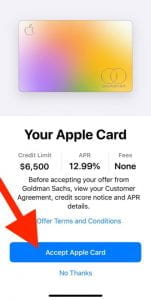Look at it from a consumer’s standpoint. How would you rate the user experience?

First off, I promise this is not another blog post that’s going to talk about how now, more than ever, because of the COVID-19 pandemic, it’s crucial that your institution’s website performs digitally. Although a very valid point, we’ll save that for another blog post. In this post, I want to challenge you to put yourself in a consumer’s shoes while they navigate the credit union’s digital branch. Let’s explore what could be a pain point during their visit.
Unadaptive on mobile
Mobile. Another buzzword, but something that we simply can’t ignore. On some devices, we have just three inches diagonally to impress users during their visit. How we use that space can either be an attractor or detractor to existing and potential members. Speaking to that point – when consumers visit your site on mobile, what do they see? Do they see an adaptive site where all charts, images, and text are adjusted to their screen, or do they see a generic condensed version of the site that feels like the content was cut and forced to fit on the screen?

Above is a prime example of content being shed and leaving bare bones for the website user. If we visited a clothing store’s site, and there are no pictures of the jeans we’re interested in, are we going to buy them? No, because there’s nothing for us to connect with and sell us. Although we offer services and not products, this is a mental note we need to take.
Lacks true digital loan/account opening
Let’s say we’re scrolling through Facebook after hours and see an enticing ad for a credit card from “Your Town CU.” We click on the advertisement to learn more information and decide to apply; however, we can’t because that’s not an option, and if it is, it’s a form with many fields presented in an unattractive way. Now, we have the choice to wait for a branch to open or apply for the Apple Card we just saw on TV, where it takes less than two minutes to apply and has automatic decision making so we can start spending instantly.


This potential wait time created leaves an opportunity for a lead to choose another option for financing or membership that can be opened digitally. Let’s ask ourselves, wouldn’t we be turned off by a form that has 1,000 fields where we had to wait 1-2 business days to hear back with today’s technology? Why are we making consumers do it?
Consumer visits are not personalized.
As we all know, cookies are not just the delicious treat grandma makes perfectly anymore. They are treats that leave “crumbs” on pages that consumers have previously viewed, allowing us to deliver better-targeted advertisements. Let’s take a look at our Amazon account’s homepage for a second. Isn’t it nice having products recommended to us that we would actually want, need, and use? Yes, it’s great. Sometimes too great and we spend more money than we should.

Now let’s think back to our credit union’s site – why are we serving the same mortgage ad to someone who already has a mortgage with us but has the need for a home equity loan, which they previously search on the site. We sometimes make it harder for consumers to convert, even though we have all the information we need to tell what they’re in the market for.
Site search isn’t performing.
How many times a day do we hear “I don’t know, Google it.” Today’s consumer gravitates to a search bar when they are lost on a site. In some content management systems or on sites that aren’t keyword-optimized, the search bar doesn’t produce favorable results. This leaves the consumer either thinking you don’t offer the product/service they are searching for or frustrates them even more as they search the website page by page till they find what they are looking for. This frustration can cause the visitor to leave, and conduct a Google search, which will lead them to another financial. If you were to conduct a search on your credit union’s website, would it deliver?

It’s a digital brochure.
When consumers visit your site, you want them to have the same reaction as they do to a firework, “Oooh Ahhh.” The presentation of content should be more dynamic than it is on the brochures in your brick and mortars. Websites give us a digital space where the sky is the limit, and with the right team developing team, anything is possible. Now, I’m not saying we need to be as dynamic as Apple, which has every piece of content move with you as you scroll. Kudos to you if you do, but that’s not realistically feasible for most institutions. I challenge you to rather than having five bullet points explaining the process of how to apply for a mortgage, embed a video of a mortgage officer walking through the steps. Rather than having a testimonial section of static text, have a live interview recording with the member on the site. Finally, rather than having just pictures on product pages include GIFs or other moving parts to give the page more life. Wouldn’t you agree this is a more attractive way of presenting your content?

Well, if you made it this far, you read my whole first blog post! Thank you, I appreciate it! Credit Union websites have become something that I’m extremely passionate about, and I jump on every chance I get to innovate, optimize, and design them. I hope this post gave you some insight and made you think of a site from a consumer’s point of view. If you ever need someone to bounce an idea off of, I’m here to help! Watch for my next blog post on Tuesday, September 7.